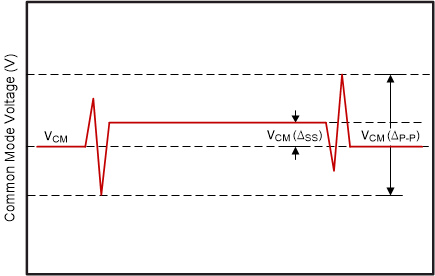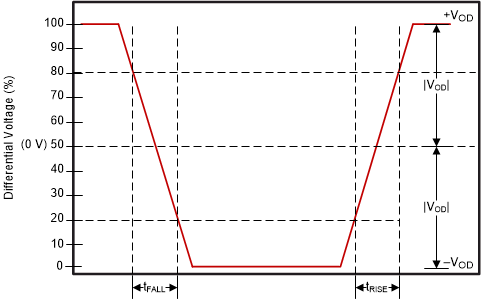ZHCSI46C April 2018 – December 2020 DLPC3470
PRODUCTION DATA
- 1 特性
- 2 应用
- 3 说明
- 4 Revision History
- 5 Pin Configuration and Functions
-
6 Specifications
- 6.1 Absolute Maximum Ratings
- 6.2 ESD Ratings
- 6.3 Recommended Operating Conditions
- 6.4 Thermal Information
- 6.5 Power Electrical Characteristics
- 6.6 Pin Electrical Characteristics
- 6.7 Internal Pullup and Pulldown Electrical Characteristics
- 6.8 DMD Sub-LVDS Interface Electrical Characteristics
- 6.9 DMD Low-Speed Interface Electrical Characteristics
- 6.10 System Oscillator Timing Requirements
- 6.11 Power Supply and Reset Timing Requirements
- 6.12 Parallel Interface Frame Timing Requirements
- 6.13 Parallel Interface General Timing Requirements
- 6.14 BT656 Interface General Timing Requirements
- 6.15 Flash Interface Timing Requirements
- 6.16 Other Timing Requirements
- 6.17 DMD Sub-LVDS Interface Switching Characteristics
- 6.18 DMD Parking Switching Characteristics
- 6.19 Chipset Component Usage Specification
-
7 Detailed Description
- 7.1 Overview
- 7.2 Functional Block Diagram
- 7.3 Feature Description
- 7.4 Device Functional Modes
- 7.5 Programming
- 8 Application and Implementation
- 9 Power Supply Recommendations
- 10Layout
- 11Device and Documentation Support
- 12Mechanical, Packaging, and Orderable Information
6.8 DMD Sub-LVDS Interface Electrical Characteristics
over operating free-air temperature range (unless otherwise noted)
| PARAMETER | TEST CONDITIONS | MIN | TYP | MAX | UNIT | |
|---|---|---|---|---|---|---|
| VCM | Common mode voltage | 0.8 | 0.9 | 1.0 | V | |
| VCM (Δpp) (1) | VCM change peak-to-peak (during switching) | 75 | mV | |||
| VCM (Δss) (1) | VCM change steady state | –10 | 10 | mV | ||
| |VOD| (2) | Differential output voltage magnitude | 170 | 250 | 350 | mV | |
| VOD (Δ) | VOD change (between logic states) | –10 | 10 | mV | ||
| VOH | Single-ended high-level output voltage | 0.825 | 1.025 | 1.175 | V | |
| VOL | Single-ended low-level output voltage | 0.625 | 0.775 | 0.975 | V | |
| Txterm | Internal differential termination | 80 | 100 | 120 | Ω | |
| Txload | 100-Ω differential PCB trace (50-Ω transmission lines) |
0.5 | 6 | inches | ||
(1) See Figure 6-1
(2) VOD is the differential voltage measured across a
100-Ω termination resistance connected directly between the transmitter
differential pins. VOD = VP - VN, where P and N
are the differential output pins. |VOD| is the magnitude of the
peak-to-peak voltage swing across the P and N output pins (see Figure 6-2). VCM cancels out between signals when measured differentially,
thus the reason VOD swings relative to zero.
 Figure 6-1 Common Mode
Voltage
Figure 6-1 Common Mode
Voltage
VCM is removed when the signals are viewed
differentially
Figure 6-2 Differential Output
Signal